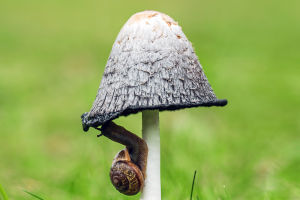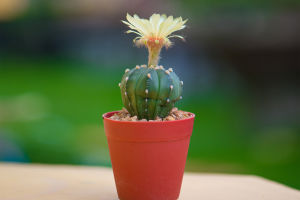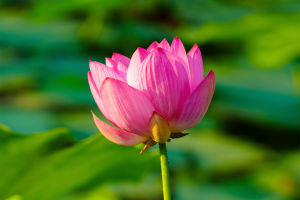If you’ve ever wanted to add a stunning flower to your garden or home, then Indian chrysanthemums (also known as Indian mums) are a perfect choice! We can’t imagine a better way to elevate the beauty of our space with these magnificent blooms.
For over two and a half millennia, people from around the world have marveled at their elegant flowering. Their name originates from the Greek word for “golden flower.” Now, let's dive into how we can grow these fabulous flowers and make them a centerpiece in our homes!
What Is an Indian Chrysanthemum?
Indian chrysanthemums are quite large, perennial plants that can grow up to 1.5 meters in height in the garden. They have simple stems and distinctive, serrated leaves. Their flowerheads consist of waxy seed baskets that are a sight to behold, blooming from September to November. In their natural habitat, these plants can be found spreading across Europe, the Middle East, the Caucasus, and India. However, they are mostly grown in the southern regions of various countries due to their warmth-loving nature.
The bloom of Indian chrysanthemums is most striking in late autumn when most other flowers are gone, adding a splash of color when nature’s brightness starts to fade. This beautiful flower draws the attention of both enthusiasts and those who simply admire nature's wonders.
Growing Chrysanthemums from Seeds
If you’re ready to grow your own Indian chrysanthemums, we need to prepare a few essential things for a successful start:
Soil: We’ll need regular garden soil mixed with sand and peat, or we can opt for a ready-made flowering plant soil mix from a garden center.
Containers: Several plastic cups or one large, shallow container will work well.
Watering: We’ll need a watering can and a spray bottle for gentle misting.
Lighting: Fluorescent lights to simulate sunlight.
Glass or plastic cover: To create a mini greenhouse for the seeds.
Before planting the seeds, we should sterilize the soil to prevent any diseases, which can be done by heating or freezing the soil. A lot of experienced gardeners simply leave their soil outside during winter or store it in the fridge for this purpose.
Planting the Seeds
We start by creating small furrows in the soil and sowing 2-3 seeds per space, leaving about 10 cm between each seed. After lightly spraying the soil with water, we cover the container with glass to create a humid environment. Place the container in a well-lit area, and within a week, we should begin to see the first sprouts.
At this stage, fluorescent lights are needed, but the temperature should not exceed 20°C. If the plant is in a sunny room with natural light, it should receive at least 6-8 hours of sunlight each day. We should continue growing the seedlings in their original container until they are strong enough to be transplanted into larger pots or directly into the garden.
Propagating Indian Chrysanthemums by Cuttings
For those who prefer to propagate plants by cuttings, here’s what we need to do:
1. Take 20 cm long cuttings during the spring and plant them in the soil.
2. To promote healthy growth, cover the cuttings with polyethylene to create a greenhouse-like effect. Make sure there are ventilation holes to prevent mildew.
3. After the first layer of film is removed, we should continue to check for diseases and provide nitrogen fertilizers to encourage root development.
4. Once the seedlings are rooted and established, they can be transplanted into the garden or larger containers.
Caring for Indian Chrysanthemums in Your Home
Indian chrysanthemums thrive in well-drained, fertile soil with a neutral to slightly acidic pH. To ensure the best growth, we can mix garden soil (4 parts), turf (4 parts), compost (1 part), and sand (1 part). Regular feeding is essential for healthy blooms:
During growth, nitrogen-rich fertilizers help build the plant's structure.
When buds appear, phosphorus and potassium fertilizers are beneficial.
These plants are quite sensitive to heat, so it’s crucial to maintain temperatures around 15°C and avoid direct sunlight. In winter, we should relocate them to a cooler, more shaded area—ideally around 5°C to help them stay healthy.
Watering and Pruning
Indian chrysanthemums love water, so we should water them every 3 days when the topsoil starts to dry out. However, we should avoid overwatering as it could lead to root rot. Always use water that has been allowed to sit for at least two days to remove any chemicals.
Pruning is essential for healthy growth. Early on, we need to trim the top part of the stems to promote branching. Around two weeks before the flowers bloom, we should pinch off the buds to encourage larger blooms.
Winter Care and Common Pests
Before winter, it’s important to prune any excess growth and move the plant to a cool, dry location to keep it safe from frost. The plant should be cut back to about 10 cm above the ground.
Indian chrysanthemums are generally resistant to pests, but some, like aphids and spider mites, can still cause problems. If we notice white powdery mildew, it’s a sign that the plant is being overwatered, and we should treat it with fungicides.
Final Thoughts
Indian chrysanthemums are a stunning addition to any home or garden. With the right care and attention, we can grow these magnificent flowers and enjoy their beauty for months. Whether we are propagating them from seeds or cuttings, these flowers will brighten our space and leave us feeling proud of our gardening skills. Happy gardening, Lykkers!


